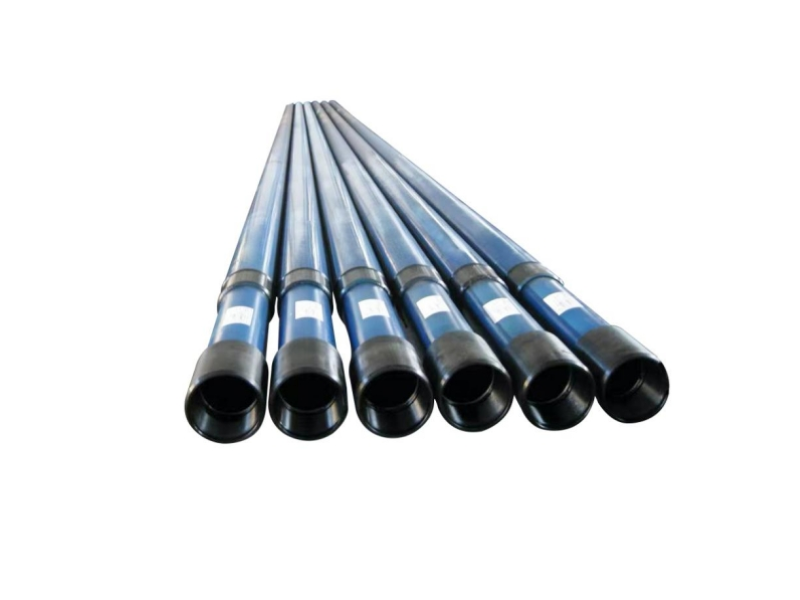Application requirements of sucker rod pump:
In the process of working of sucker rod pump, in order to ensure the long-term production capacity of oil fields, you can refer to the following contents:
(1) the material strength of the suction valve and plunger of sucker rod pump must meet the actual use requirements, especially the pump barrel structure that bears the most pressure, which must have sufficient strength, hardness and sealing at the same time, and its overall shape will not deform when subjected to high pressure.
(2) sucker rod pump needs to work underground for a long time, and in this extremely closed working environment, the equipment itself needs to have extremely high stability and reliability, and must have a long service life.
(3) various valves and plungers need to meet the corresponding process requirements in terms of quality and material strength, and have high corrosion resistance, and pay attention to the impact of the working process of sucker rod pump on valves and plungers.
(4) pay attention to daily maintenance procedures, and solve various problems faced by sucker rod pump in a preventive manner.
Below, we will conduct a specific analysis of several common problems, hoping to help friends who encounter such problems. Let's read on!
Common fault analysis of sucker rod pump:
1. Sucker rod pump valve leakage:
(1) in low permeability oil fields, the liquid filling degree in the pump is poor, and "wave shock" and "cavitation" are prone to occur during the up and down strokes. The strength of the ordinary stainless steel ball seat is low, which is easy to cause corrosion and grooves on the ball valve and sealing surface. The thickness of the heavy ball seat is thinner than that of the normal ball seat, and the valve is heavier. The ball seat and the valve are easy to deform during the collision between the opening and closing of the valve. (2) after the oil well acidification and acid fracturing measures, the well is not washed thoroughly enough, and the residual acid corrodes the valve, the valve has pitting, and the sucker rod pump valve is not sealed tightly with the ball seat. (3) scaling influence. Scaling is common in oil wells. Sometimes scaling will also occur on the sealing surface of the ball seat, causing the valve to fail to effectively seal with the sealing surface, resulting in valve leakage.

2. Pump stuck:
Pump stuck mainly includes scale stuck, wax stuck, sand stuck, oil sludge stuck, etc. (1) when the oil well is seriously scaled and waxed, scale flakes or wax blocks fall off and fall into the pump cylinder, causing pump stuck. (2) fracturing transformation measures, incomplete well washing or large pumping parameters cause formation sand spitting. During the operation of the sucker rod pump, sand enters the pump barrel and forms sand jam. (3) the wellbore is dirty. Dirt such as wellbore sludge is deposited in the tail pipe. When the deposition reaches a certain level, the fluid carries it into the pump barrel and causes pump jam.
3. Valve failure:
(1) the oil well intermittently discharges liquid. When the sinking degree is lower than the pump suction port, the liquid column cannot generate an upward opening force on the fixed valve. When the piston is running on the upward stroke, the fixed valve is still in a closed state, resulting in valve failure. (2) there is sludge attached between the ball seat and the valve, which increases the resistance to the valve opening. The fixed valve cannot be opened during piston pumping, resulting in valve failure. (3) the influence of tubing magnetization. When the tubing is magnetized, the fixed valve and the floating valve ball cannot be opened or closed normally due to the magnetic force of the tubing, resulting in valve failure.
4. Valve cover breakage:
(1) the valve cover structure is limited by the valve ball and the outer diameter. The valve cover is relatively thin and is one of the weakest parts of the rod column. Under the action of alternating loads and torque, stress concentration is easily generated, resulting in breakage. (2) the valve ball frequently impacts and collides. Under the action of oil flow and chamber pressure difference, the valve ball produces high-frequency collision and grinding on the wall of the valve cover, causing the valve cover to deform and become thinner, resulting in valve cover breakage. (3) influence of well corrosion. The valve cover undergoes electrochemical corrosion under the action of corrosive media, and the valve cover becomes fragile and easy to break.
In the next article, we will provide corresponding solutions and countermeasures for the above problems. Please stay tuned.

